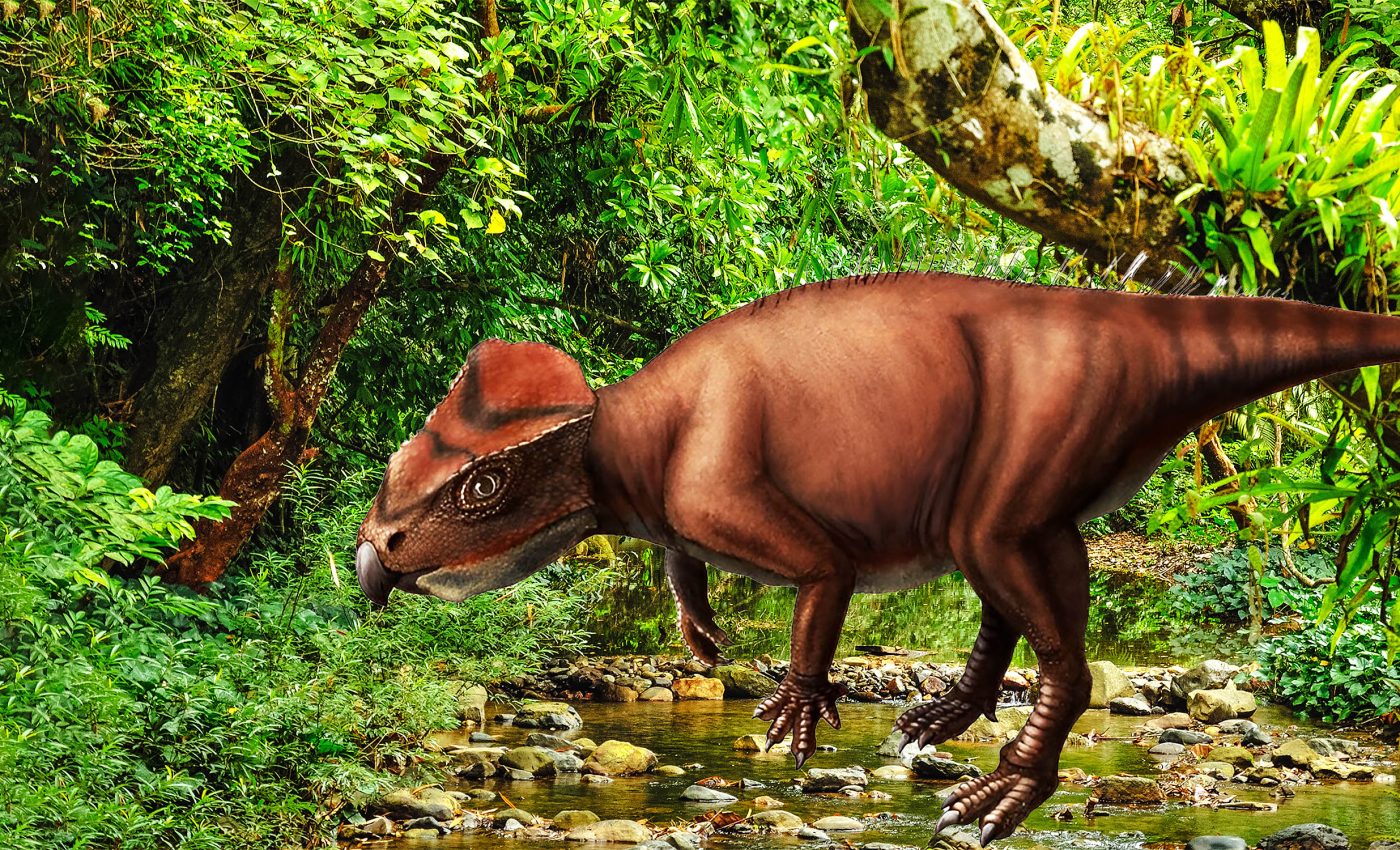
Tiny triceratops relative shakes up dinosaur migration theories
Researchers recently embarked on an exciting journey to Japan’s Tambasasayama City, located in Hyogo Prefecture. This journey resulted in the discovery of Sasayamagnomus saegusai.
The teams focus was on exploring the extraordinary world of horned dinosaurs, including the iconic Triceratops.
Sasayamagnomus saegusai
This new dinosaur exhibits unique traits, distinctly different from known ceratopsians. Although it is an early ceratopsian, it lacked the large horns and frills that later species like the Triceratops are known for.
The study revealed dinosaur with a diminutive body length of only about 80 cm, and a mass of approximately 10 kg.
In fact, its internal bone structure and growth rings suggest it was still a growing individual when it died.
The genus name of Sasayamagnomus saegusai is inspired by the meaning, “a small humanoid spirit guarding hidden treasures under the ground of Sasayama,” while the species name pays homage to the late Haruo Saegusa.
Significance of this tiny Triceratops
This remarkable fossil find is more than just a set of bones. It includes as many as 17 bones, with the majority belonging to a single individual.
Upon studying thin sections of the tibia, it was revealed that Sasayamagnomus saegusai was likely a young, not fully matured individual.
The Sasayamagnomus saegusai isn’t just unique; it’s also a global traveler, figuratively speaking. It is closely related to ceratopsians from North America.
This fact suggests that ceratopsians, although originating in Asia, might have made the journey to North America around 110 million years ago during the mid-Cretaceous period.
Picture a time when the eastern part of the Eurasian continent and North America were linked by the Bering Land Bridge.
This connection facilitated the migration of animals between the two areas. Couple this scenario with extreme global warming, resulting in dense forests in the Arctic region, and you have a perfect backdrop for the migration and expansion of ceratopsians from Asia to North America.
Understanding Sasayamagnomus saegusai
The discovery of Sasayamagnomus saegusai offers critical insights into the evolutionary pathways of ceratopsians. It challenges previously held notions about the timeline and geographical distribution of these fascinating dinosaurs.
By highlighting the diverse morphological characteristics of this ceratopsian, researchers can better understand the adaptive strategies employed by horned dinosaurs in response to their changing environments.
This finding by Michael Ryan emphasizes the importance of fossil records in reconstructing the complex web of prehistoric life, illuminating how species evolved and interacted across disparate regions over millions of years.
Future research directions
As excitement mounts within the scientific community, the implications of Sasayamagnomus saegusai extend far beyond its immediate discovery.
Future research may focus on comparing its anatomical features with those of other ceratopsians, not only within Asia but also in North America and other continents.
Such comparative studies could refine the understanding of ceratopsian evolution and migration patterns.
Additionally, this discovery opens doors for interdisciplinary collaboration, encouraging paleontologists and geologists alike to explore the impact of climate change on the habitats of these ancient creatures.
By piecing together this intricate puzzle, researchers can contribute significantly to the larger narrative of life on Earth, detailing how ancient organisms adapted to their environments and evolved over time.
Ecological context of Sasayamagnomus saegusai
To comprehend the ecological significance of Sasayamagnomus saegusai, one must consider the environmental conditions of the mid-Cretaceous period in which it thrived.
During this era, the Earth was characterized by lush vegetation, with extensive forests and diverse flora providing abundant resources for herbivorous dinosaurs.
The presence of small horned dinosaurs like Sasayamagnomus saegusai suggests a diversity of ecological niches occupied by ceratopsians, each evolving distinct adaptations to survive within their respective habitats.
By investigating the isotopic composition of the bones, researchers may uncover the dietary preferences of Sasayamagnomus saegusai, further elucidating its role within the ecosystem.
Implications of this discovery
The implications of the Sasayamagnomus saegusai discovery extend into the broader field of paleontology, prompting a reevaluation of not only ceratopsian evolution but also how we understand dinosaur biogeography in general.
As scientists continue to unearth fossil evidence, the relationships between species can be mapped more accurately, revealing patterns of migration and adaptation that were previously obscured.
The paradigm shift induced by this discovery encourages a holistic approach to research, emphasising the interconnectedness of species and their environments through time.
Furthermore, it highlights the necessity of long-term field studies and interdisciplinary methodologies to fully grasp the complexities of prehistoric life on Earth.
Throwback into time
This fascinating journey we embarked on has led us from the buzzing streets of modern-day Tambasasayama City to a time when dinosaurs roamed the land.
It is an exploration into the world of dinosaurs, a time chronicle that underscores the dogged spirit of global migration, survival, and evolution.
This new discovery, the Sasayamagnomus saegusai, has truly left a foot…or a claw-print in the sands of time.
The study is published in the journal Palaeontology.
—–
Like what you read? Subscribe to our newsletter for engaging articles, exclusive content, and the latest updates.
Check us out on EarthSnap, a free app brought to you by Eric Ralls and Earth.com.
—–













